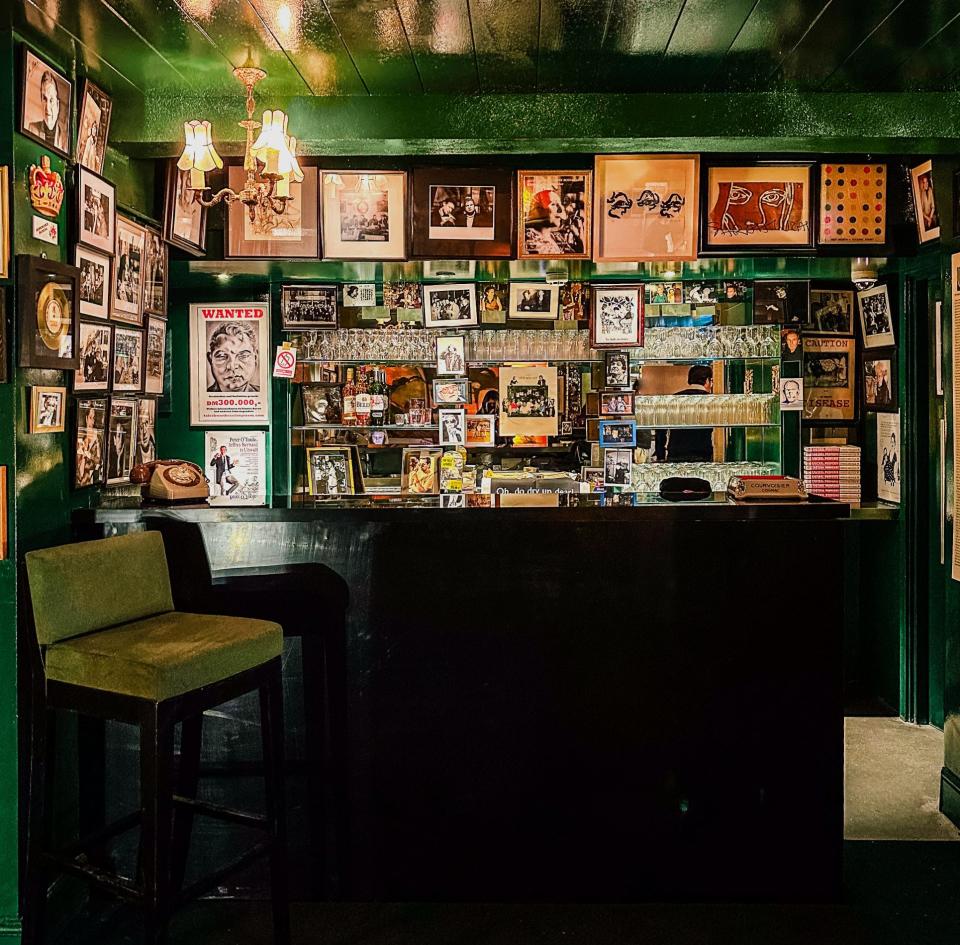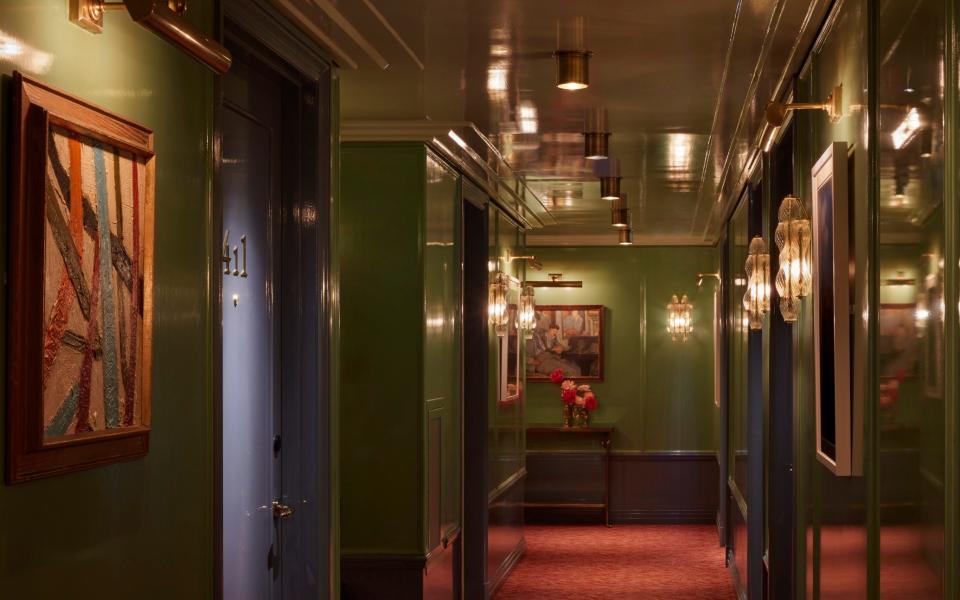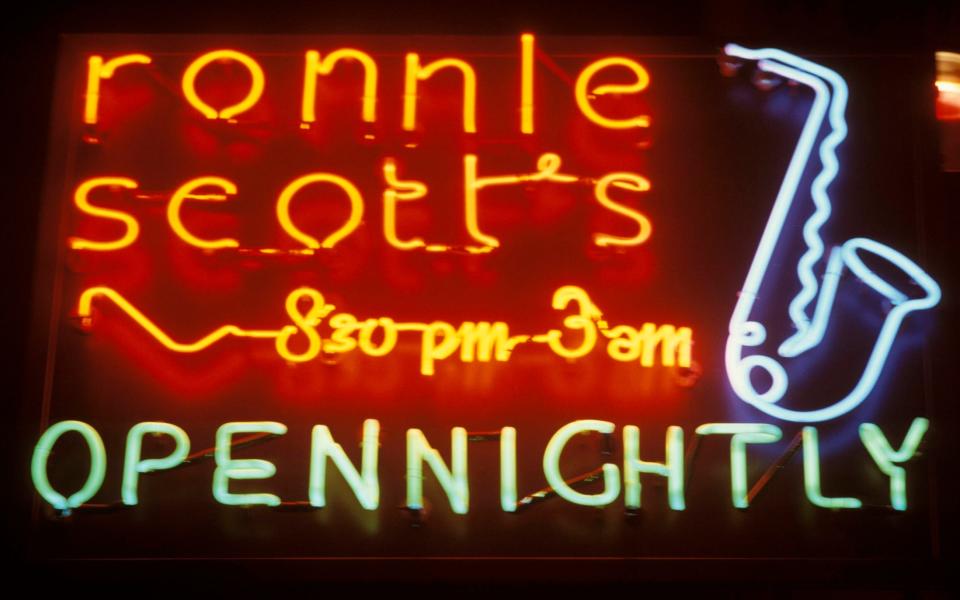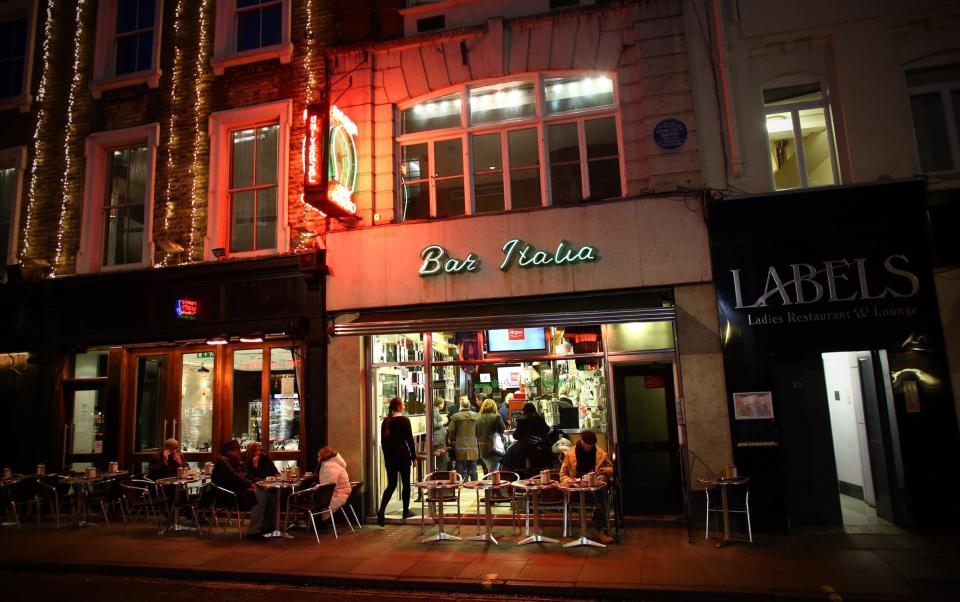The doors are open (again) at the small Colony Room Club, for 60 years the refuge of Soho’s hard-drinking inhabitants. Same hours of 3:00 pm to 11:00 pm, same swamp green walls, same slightly askew art room. Missing is the ghostly cast of regulars (artists, writers and drinkers, many of them long gone) and its formidable original landlady, Muriel Belcher, who died in 1979.
Oh, and it won’t be at 41 Dean Street. This version of the famous bar, Colony Room Green, is located on Heddon Street, Mayfair (below Daisy Green Collection’s Bowie-themed restaurant Ziggy Green) and opens today. At the helm of the underground Colony Room 2.1 (or 2.2, as this is the second revival) is artist, author and former member Darren Coffield, owner of much of the memorabilia.
Soho, on the other hand, has just opened The Broadwick, a 57-room hotel on the corner of Broadwick and Berwick streets, with its name illuminated above the door and two gigantic elephants out front wearing leopard skin and top hats, easily holding his own against passing rickshaws like crazed jellyfish.


The new hotel is opposite the glass-fronted dim sum shop Yauatcha. They dwarf their older neighbors: the Blue Posts pub, Berwick Street and its market, vinyl sellers Universal Sounds and Reckless Records, and the corner newsagent with its red and white striped awning.
Cue complaining that Soho is losing its charm. “Oh, not again,” said Simon Buckley, rector of St Anne’s Soho, showing me photographs of the church demolished in 1940 to be replaced by today’s chapel and community centre. “Soho changes with each generation. It was a refuge for the Huguenots, then came the artisans and craftsmen, then the Jewish tailors and the rag trade, the music, film and advertising industries, then the sex trade, followed by the LGBTQ community. Now it seems like it’s all about food and drink.”
I have some skin in the game. I arrived in Soho the year Muriel Belcher died. My first job was at a film company in Wardour Street (defunct); My boss was known to dance on the tables during lunch at the Gay Hussar (defunct); I saw my first handmade porn with a Moviola (disappeared); and as a journalist I have wasted many happy nights at Groucho and Bar Italia (both still here) or at Blacks (just gone).


In other words, like most people, I never saw Francis Bacon slumped in the bar or Tracey Emin bothered him; They are all borrowed memories, as are the jazz venues of the 1920s and the skiffle bars of the 1950s. While I really miss the dirt, I am quite surprised, looking at photographs from the early 1980s, that they do not It bothered me how sleazy or sexist it was. And yes, I miss the uncurated mix of businesses and people, the varied world that existed when property was cheap, but that’s not how London works anymore, whether you’re in Soho or Dalston, Clapham or Camden Town.
I still delight in Soho. It’s a brilliant area of London, the other Square Mile; a dense network of hatchet-shaped streets, bordered by Oxford Street, Regent Street, Shaftesbury Avenue and Tottenham Court Road, extending towards busy Chinatown to the south, with two squares and several churches.
There is a surprising amount of old stuff. Who wouldn’t love Meard Street, a strip of old Georgian houses still standing after 300 years, like carefully manicured teeth? A friend just sent a link to last week’s thebluemoment blog on the subject of composer Richard Williams. Who wouldn’t love the fact that Ronnie Scott’s is not only there but thriving (as you’ll know if you’ve tried to book recently) or that the Algerian coffee shops (1887) and the Italian delicatessen I Camisa still exist in Old Compton? Street?


But what matters is now, and what saves Soho, despite the chains and the creepy conservation of the space, is that it continues to function. The big production and post-production houses, De Lane Lea, Molinare and MPC, are still there, as are many design and advertising companies. Behind the digital screens of Piccadilly Circus, a seven-storey office complex, Lumen, has opened and should keep the hustle and bustle going.
Many small spaces house independent businesses, from food to fashion. Fabulous old stalwarts like Andrew Edmunds on Lexington Street, whose eponymous owner sadly died in 2022, have been joined by an astonishing array of food, much of it Asian, often in places so small they don’t take reservations.
The 21st century has seen the venerable Soho Theater Company occupy a new concrete house on Wardour Street, the arrival of two hugely popular Firmdale hotels: Ham Yard, named after the Ham Bone Club of the 1920s, and the Soho Hotel, with its giant bar, and a revived Carnaby Street, as unashamedly commercial as it was when it sold loons and herring ties in the 1960s and much loved for its Christmas lights. There is a great little French biodynamic wine bar, Antidote, just off the main street.


Meanwhile, the purple Elizabeth line circle appeared at the top of Dean Street, marking one of two new entrances to Tottenham Court Road tube station. Several old favorites were crushed in the process, but opposite the other entrance, with its strangely fascinating giant cube of digital images, is Soho’s first new theater in 50 years: Nimax’s 600-seat @SohoPlace, under directed by producer Nica Burns.
The place I always go is Bar Bruno on Wardour Street, an Italian cafe that’s largely unchanged in 40 years. The place I’d love to stay is also old: Hazlitt’s, a beautiful 30-room hotel in a 1718 house on Frith Street, once the home of the essayist of that name.
Douglas Blain, one of its founders, was also a key player in saving Spitalfields.
“The atmosphere is the easiest thing to destroy and the most difficult thing to create,” he said in a recent interview. “It’s not about money. “It’s about the soul.” Please take note, Soho developers. We are watching closely.